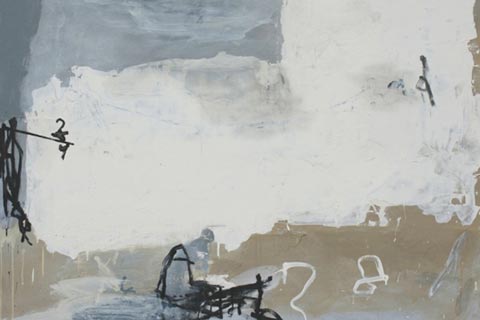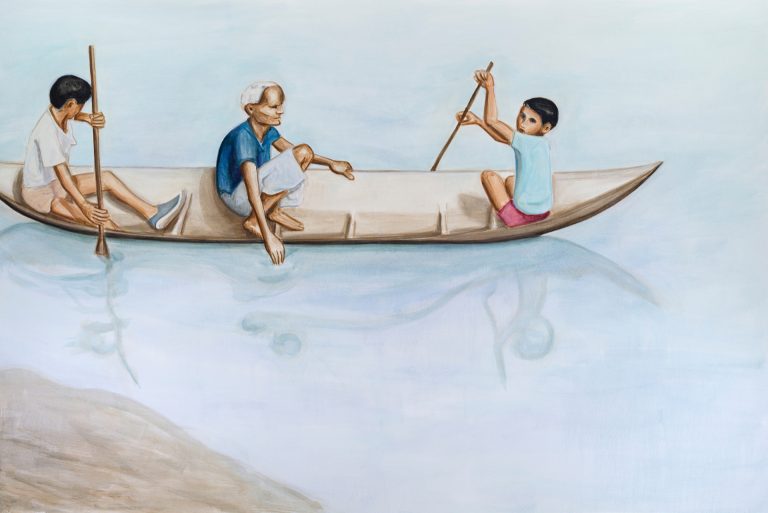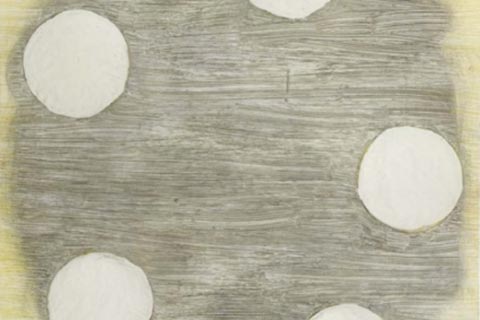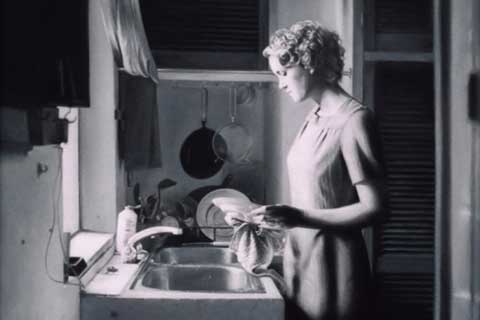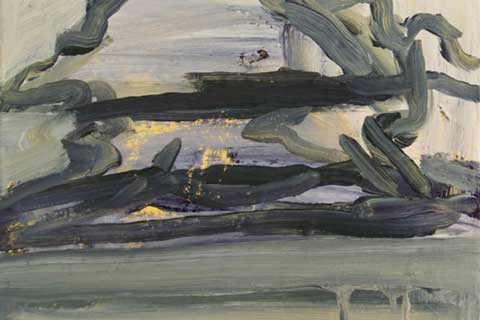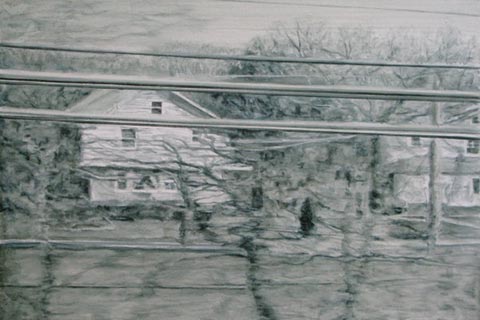Joanna Whittle in conversation with David Orme
Introduction
Joanna Whittle’s ‘Between Islands’ is an Arts Council (Developing Creative Practice) funded project working with the Harley Gallery and Portland Collection on the Welbeck Estate. The project and subsequent exhibition explore the relationship between ‘creating worlds’ and ‘creating collections’ and the role curation and display of collections plays in developing narratives – real or imagined. The project has involved collaboration with artist David Orme, to explore the determinations of display and the decisions made to formalise the fictional into the authentic. The first section of the conversation took part just at the beginning of Lockdown.
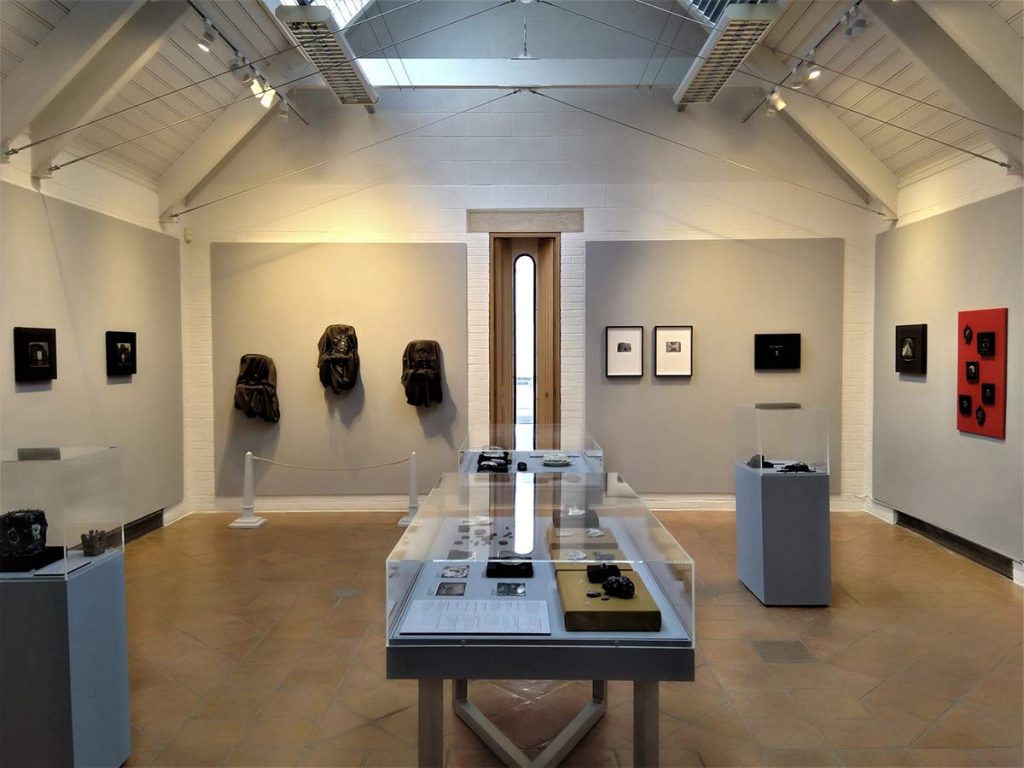
Part 1 – March 2020
Joanna Whittle: David, we met when I was curating Flat+Earth at Sidney&Matilda Gallery in Sheffield. It was great to work with you then and I realised that you had a very intuitive understanding of ‘artworks’, in this instance painting, and the weight of how they are displayed. As I came to understand your practice more, I saw how this placement of things extends into many aspects of what you do. Maybe you could talk a bit about your work to contextualise this and we can go from there.
David Orme: In the past I have described the processes I employ when making collages as homologous to the social ritual of collecting, arranging and displaying. Often the impulse to create collages is linked to the seduction and order of things. This desire to consolidate unconnected objects is a curatorial process of sorts. My art practice and my experience as an art handler feed this interest in arrangement and display.
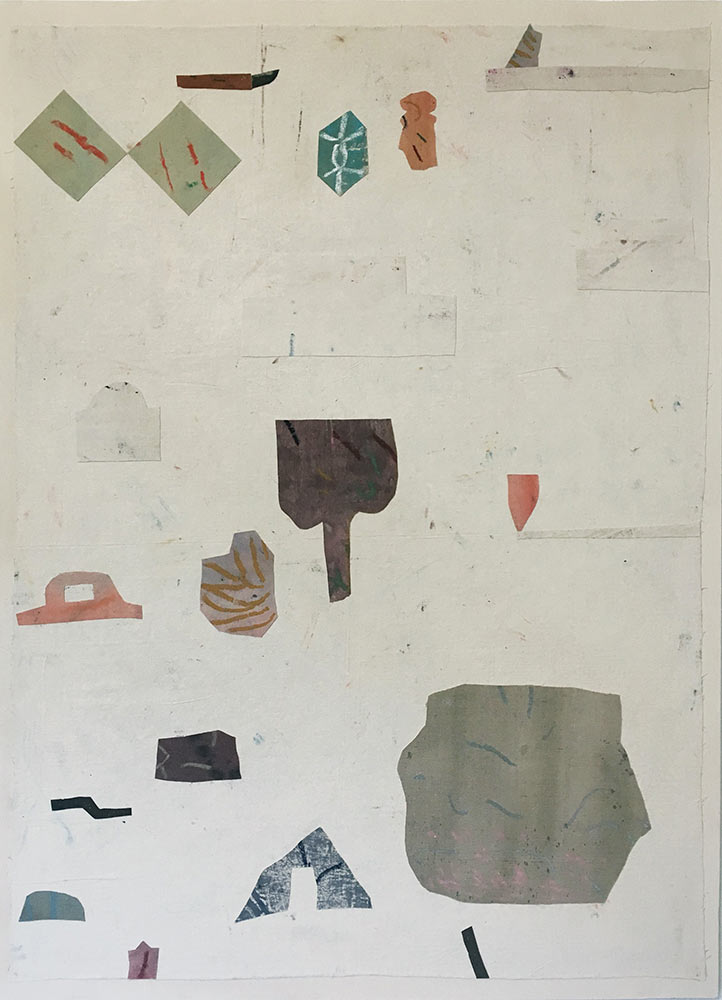
I was familiar with your work before we met and installed Flat+Earth together. I was really drawn to your paintings, particularly the curious mise en scène. Often I feel urged to unravel a narrative within your paintings and make sense of a temporal juncture. Can you expand on the above and how do you see the landscape and rich history of the Harley Gallery / Welbeck Estate influencing new works?
Joanna: There are indeed implied narratives in my paintings, but these always seem elusive and not fully formed – made up of many elements which often conflict and unsettle any stable narrative. I think that’s what really appeals to me about working with the Welbeck Estate and Portland collection, there are so many different histories and narratives, each seeming to remain half concealed and ambiguous. To some extent it is the aspect of deciphering evidence and artefacts of these histories which I find fascinating and which cross over to your working practices. I think the way Derek Adlam (past curator of the collection) explained it when we visited him – that the estate is like a palimpsest, with histories emerging and then submerging – really sums it up. The idea of these undecipherable layers beneath the present which nevertheless echo within it. This has been a strong theme within my own work throughout each of its iterations – so really it seems a perfect world for me to explore.
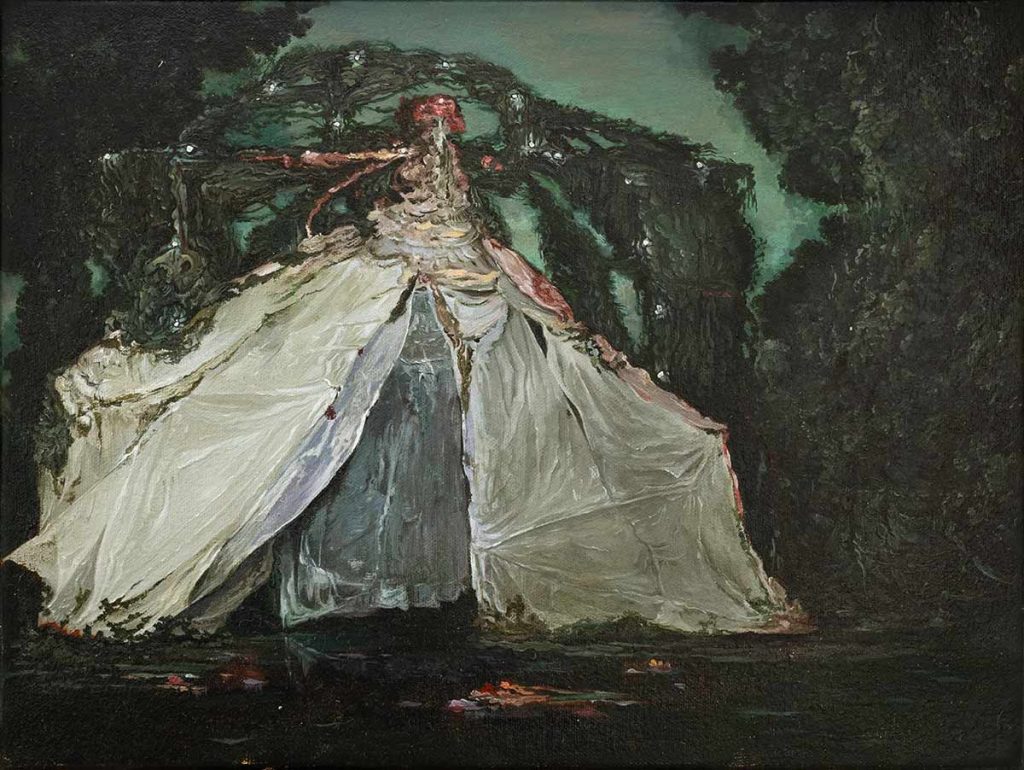
We had a great visit to the estate – back in February – exploring the landscape, and meeting with Derek and Hannah Marples (Historical Fabric/ Costume expert and Gallery Coordinator at the Portland Collection), it seems a long time ago now, but I wonder what your impressions were and whether you had responses within your practice or any ideas regarding the project.
David: Absolutely, Derek’s description of the Welbeck Estate as a palimpsest really chimed with your work. The estate’s rich history and landscape must be fascinating and in projects like this there’s generally a freedom to explore and communicate any themes that relate to your practice. However, because the estate is privately owned there are limits to the research. During our visit in February I was intrigued by the division between the public and private areas and where these collide in the landscape; this certainly supports a ‘half concealed and ambiguous’ narrative. How do you feel about your ability to navigate these two worlds: public/private?
Joanna: I think this aspect really informs the work; the secrecy of places glimpsed – closed gateways and hidden tunnels… imagined spaces. So much of my work is about facades, of only surmising what lies behind or within and from this starting point worlds unravel. In contrast to my usual source material, which can be scarce, there is almost too much inspiration at Welbeck – it is already mysterious, and ethereal, moss strewn and topiaried; heavy yews and rookeries, verdigrised statues… The challenge is to circumnavigate the seduction of this, to pick between it and still find what it is that lures me beyond it.
David: We had the opportunity to explore different sites and there was something quite theatrical/cinematic about the topography. Visiting Derek felt as though we were behind the scenes, meeting a cast member backstage, it was quite intimate and I felt privileged to be in his house and his company. Until our encounter with Derek, the Welbeck Estate felt quite illusory. Can you expand upon this experience?
Joanna: Well – I am almost tempted to remove myself from this discussion and ask Derek to take my place. I think it’s the privilege of being in the company of someone who understands a place so deeply, both through a temporal knowledge and a deeply and thoughtfully learned understanding of so many intertwined histories – and most importantly, for me, the way the natural history of the estate and landscape weaves into the centuries. Meeting Derek in his home, within the estate was indeed a privilege and the whole experience felt embedded in the ever unfurling and settling history of Welbeck.
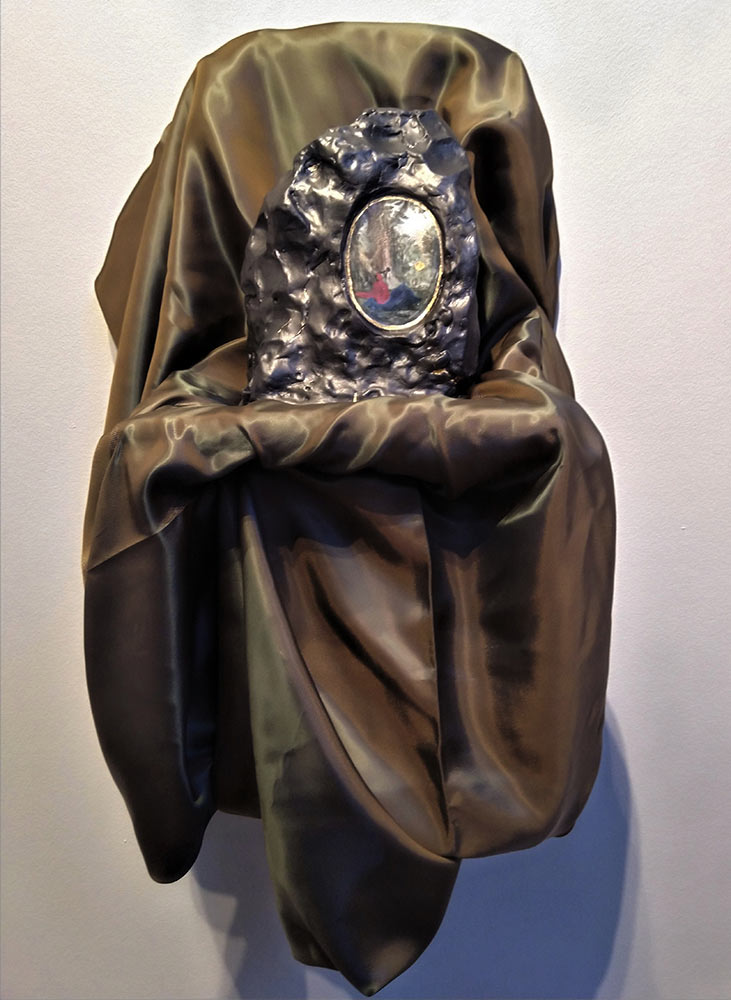
David: Objects on display at the Harley Gallery are imbued with remarkable historical accounts. Whenever I visit museums and galleries, I am always keen to know more about items in the collection that remain in storage. With experience working in museums, I am aware storage and archive spaces contain many artefacts that are less significant or perhaps irrelevant to a temporary exhibition. Nonetheless, in the right context, such objects can assimilate vitality; specific methods of display can elevate the most banal of objects. This holistic approach to the arrangement of forms to create new narratives is fundamental to my work.
Joanna: Yes, there are some really fascinating objects in the Portland collection. I love the quiet display of items associated with Charles I – his pearl earring, the toothpick he gave his guard before his execution – that is his gold toothpick, the last cup he drank wine from, coins, a strange black token. It is such an intimate and sombre collection of objects – some imbibed with that intensity of the moments before his death and some ephemera of the time but all displayed with the same touch, without hierarchy. Other highlights for me are the golden pap boat and a miniature of some moss agate.
I am really looking forward to our further collaboration on this project due to your approach to objects and artefacts. I like the different inflections of interpretation that this brings – it was great visiting the collection with you for that reason – I was exploring paintings while you were looking at the curtain behind the paintings. Also, I think the insight and historical knowledge that Hannah was able to share with us regarding the fabrics in the paintings was invaluable to both the making of the work and in our collaboration.
I also like the idea of handing my work over to you, as though it was found in the basement of a building somewhere on the estate – the idea of removing myself from it and it being displayed only by the context of the setting and the imagined narratives. I think I am interested in your processes – how decisions are made- both in your collage making and in the placement of objects – are you able to describe some of these processes or is it more intuitive? I just wonder what the influencing factors may be.
David: It’s an interesting idea, the notion that your work is ‘found in the basement of a building somewhere on the estate’. Are you attracted to the idea of inserting a fictional persona into the Welbeck Estate’s convoluted narrative? You’d effectively be allowing yourself to inhabit two roles.
I think it’s worth investigating the duality of such an idea because your works frequently encourage us to inhabit a character within a fictive universe; they are indeed a ‘starting point [whereupon] worlds unravel’. In adventure genre, video games we have control of a character and inhabit what is often a sublime and overwhelming space. I felt our day at the Welbeck Estate was not unlike an adventure genre, video game.
I too was drawn to the intriguing objects you mentioned: the golden toothpick and the pearl earring. They are the kind of items a video game character might collect and store in their inventory. The idea of an inventory and collecting items is of interest to me, particularly the gratification we experience gathering things albeit in a virtual world.
The formal decisions I make during the collaging process are typically intuitive, though a display I might have seen in a shop window, in an advertisement or a gallery display, can influence my work. The forms that emerge during the cutting and mark making stages of the process are informed by what I refer to as liminal objects. These might include souvenirs, keepsakes, ceremonial objects and apotropaic charms, historically found in domestic dwellings to guard against malevolent spirits. A golden toothpick would fit quite nicely into one of my works!
Joanna: In an odd sort of way I have already inserted myself into the narrative history – if not of Welbeck – then the project itself. With the paintings, it is as a witness to the unravelling of these narratives – whilst with the ceramics and other items such as postcards and ephemera I have become the many contributors in this continuous history. I enjoy this aspect, imagining whose hands make the Pastijware and who paints it. I am also the collector – mimicking the collecting history at Welbeck. In this collaboration I imagine that as the collector, the acquirer, I hand these art works and artefacts over to you as the interpreter and subsequent curator (arranger?) of this collection. I like this idea of assigned roles – albeit inauthentic roles to some extent. And I like the idea of this manhandling of information – though my interpretation of the grounds and collection – to its unravelling and reassembling as a new narrative. It is like a re-layering of this history. I think that is the real undercurrent to this project but also my work in general – it’s not open handed.
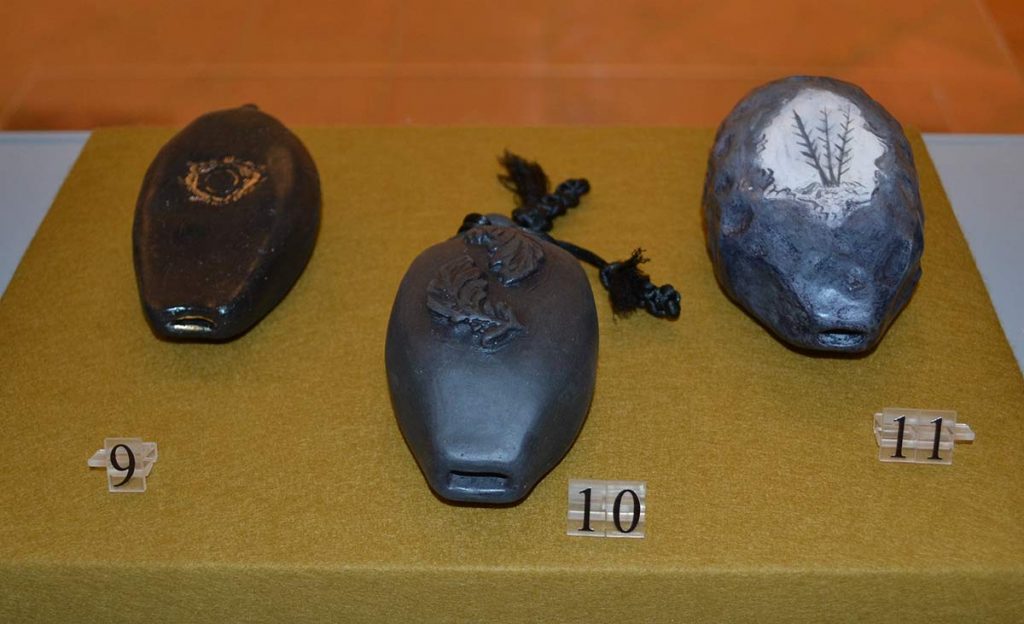
Part 2 – August 2020
Joanna: So David, looking back on our conversation from March… a lot has happened since then.
We talked about how we would work together both in the collaboration and the final curation and obviously a lot of things changed with the project due to the circumstances.
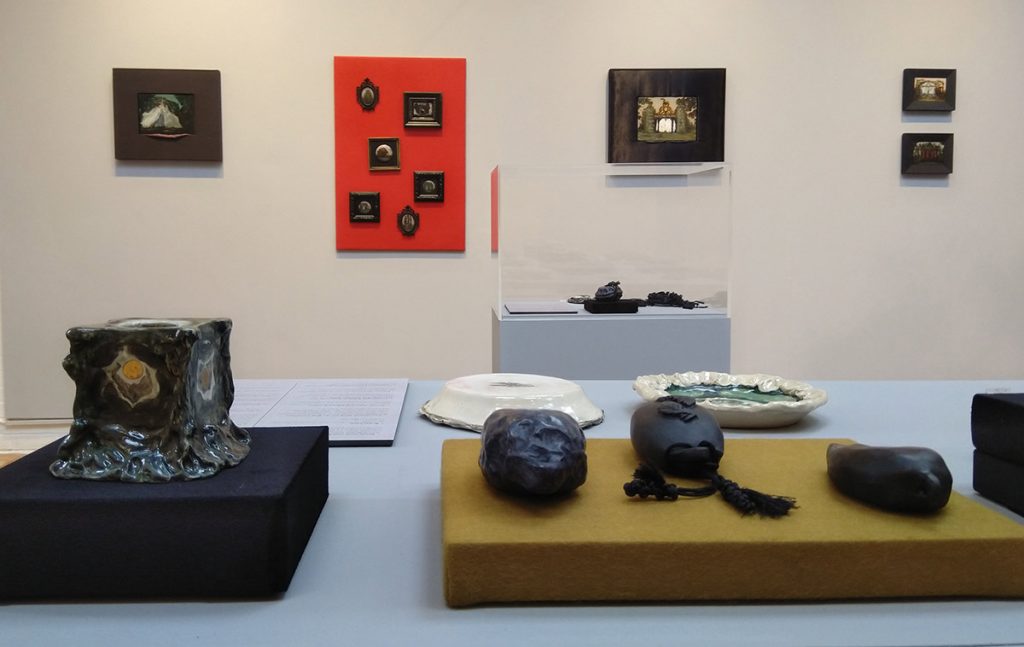
I am starting this final part of the conversation just after the exhibition has been hung and will be opening 1st August. So firstly, to say Lockdown did have a massive impact on the project both in the way I actually made the work whilst unable to be in the studio and in our ability to collaborate. We managed this through phone conversations and video calls.
Whilst we both had to find our way in the project in a new set of parameters, I think some really interesting things came up. We had some great times meeting in the street and in your back garden waiting for you to bring out the next marvel like a sorcerer.
The fabrics in the collection have played a big role in the final display and I think a good example of our collaboration was the copper piece that you worked with. It was a piece that I was unhappy with that was nearly an ‘in the cupboard piece’ and I think at one stage I suggested we cut it up into pieces to salvage the bits I liked! But ultimately it was redeemed, and I think it is those paintings that are nearly lost, nearly cupboard bound, that often become more special. Once I handed it over to you – you laid it down on velvet, and I mean to say it in this way- it wasn’t simply a framing process. The painting sits on the surface of the fabric (through your trickery) and the surface of the painting becomes heightened by the process with velvet echoing the velvet viridian (almost black) surface of the painting. And I think that’s where this collaboration lies – in that double communication and understanding. There is a magic about it – there are threads both in the paintings and ceramics that are alchemical and strangely shapeshifting – I like the idea of this fluidity – of things becoming ‘other’ than themselves. I often think they are arrested at the moment of being looked at but unobserved they may continue to move, or shift. And I think the collaboration with you enhanced this esoteric aspect. An alchemy of processes.
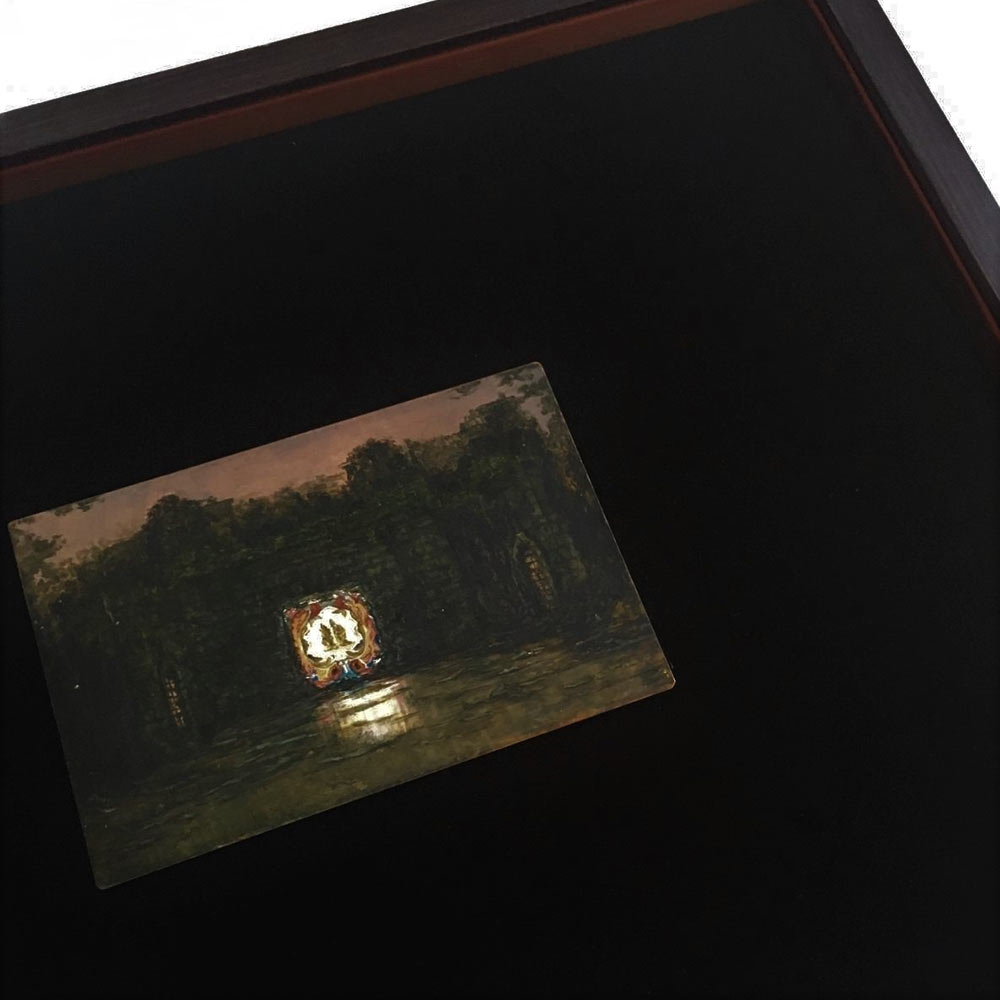
Joanna Whittle 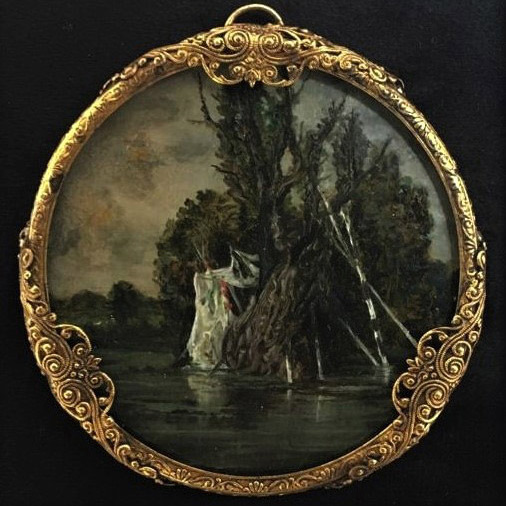
Joanna Whittle
David: Although collaborating during the Corona virus pandemic was difficult, we communicated frequently and, like you said, we had some productive roadside meetings. I struggled to get access to my studio so I had to make things in my attic, which was far from ideal.
You’re right, the framing of your work painted on copper plate is a good example of how works evolved through experimenting with materials and discussing the wider project. When we visited the Harley Gallery there was a particular display that caught my eye. The paintings and objects were displayed in front of a pleated/folded curtain and the paintings appeared to be hung from the fabric. I’d seen a similar display at a Picasso show at Gagosian Gallery a few years earlier and had thought about the hanging and fixing methods. Such displays are reminiscent of the framing of the copper plate painting. It was important the plate appeared on top of the fabric without showing any fixings, therefore sorcery (magnets) were the best option.
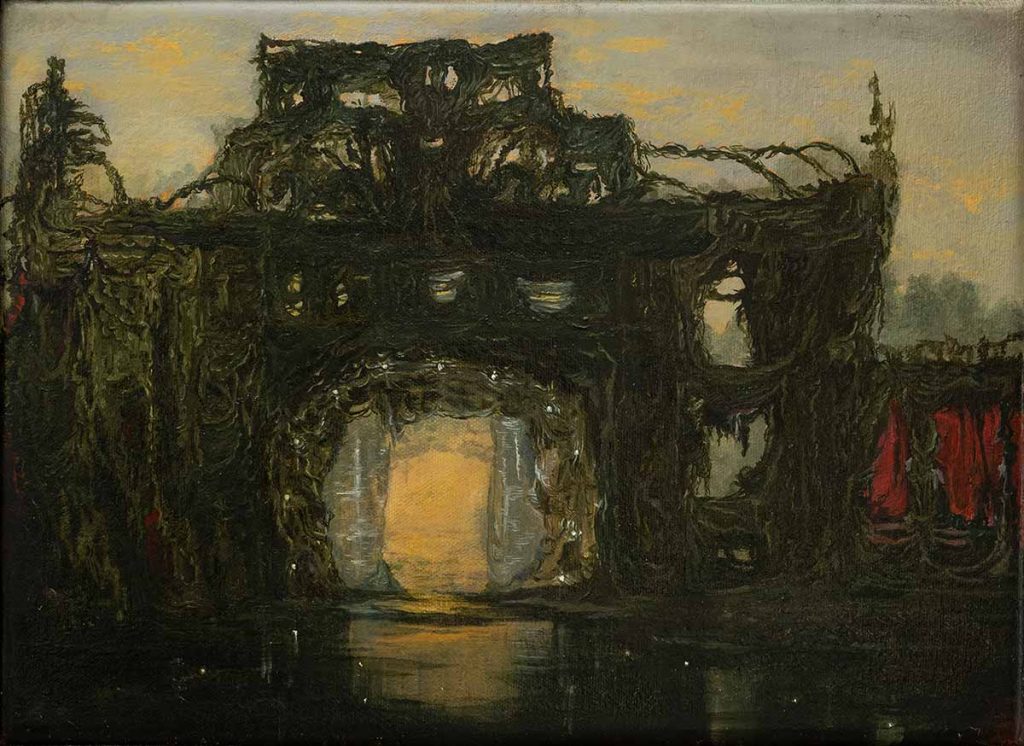
These methods support your thoughts of fluidity and objects shifting when unobserved… During recent discussions you mentioned creating extra content for and surrounding the display during its run at the Harley Gallery. I think it would be interesting to explore this idea further. An artifact could be removed from display for a few days, perhaps replaced by an image of the object and some information relating to its omission. I like the idea that the objects are active; in this world and the other.
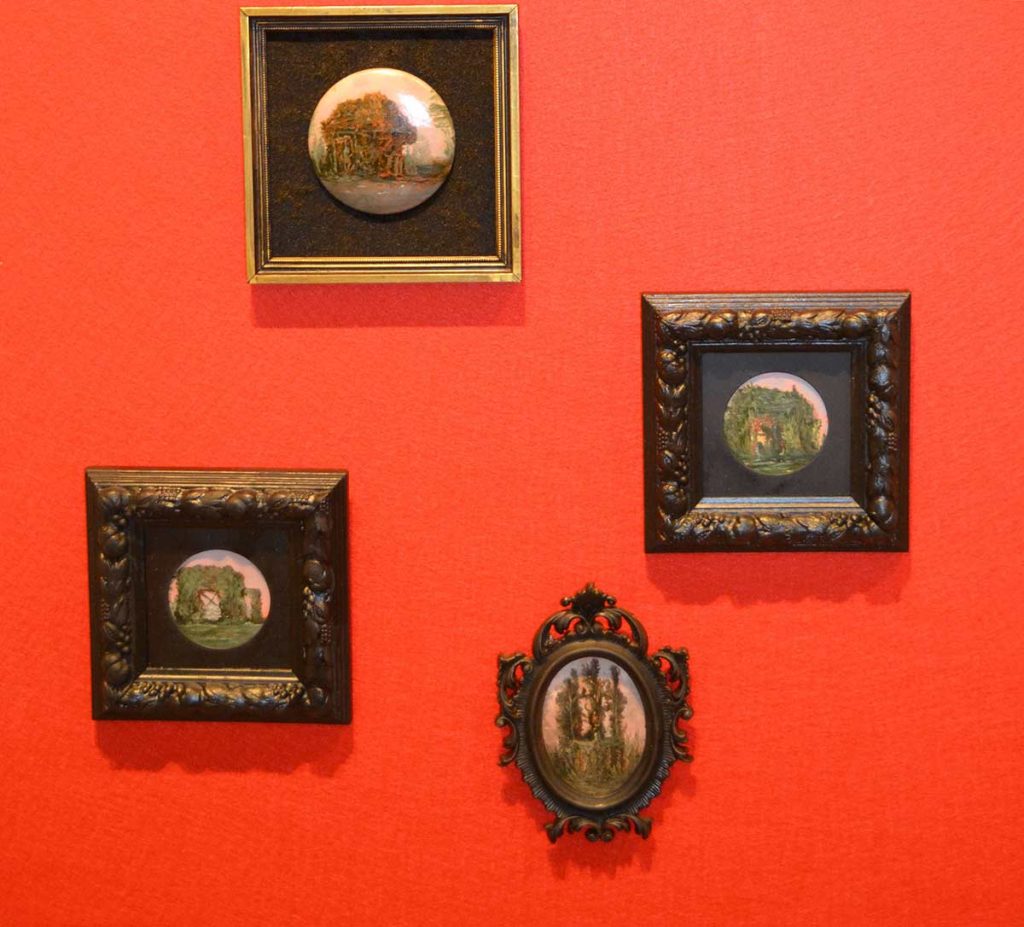
Joanna: Yes, I like the idea of two worlds operating simultaneously. With the paintings it is as if this is already the case – that there are different time zones and narratives weaving in and out of each other. Where the landscape flickers and almost imperceptible movements are detected. Like lights going on and off in a doll’s houses- did that canvas lift slightly in the windless wind? And as the project developed the ceramics too became more and more other worldly and started to deal with some of the themes implied in the paintings – such as magic, certainty, void and solid – the solid becoming hollow. So I think the movement and rearrangement of these almost ceremonial objects would be really interesting.
I wanted to talk about the prints you made for the exhibition. I am really interested in the culmination of your processes within them. The collecting of objects, of images of objects; their arrangement; the mystic photographic process. Can you tell me about the decision making behind these processes?
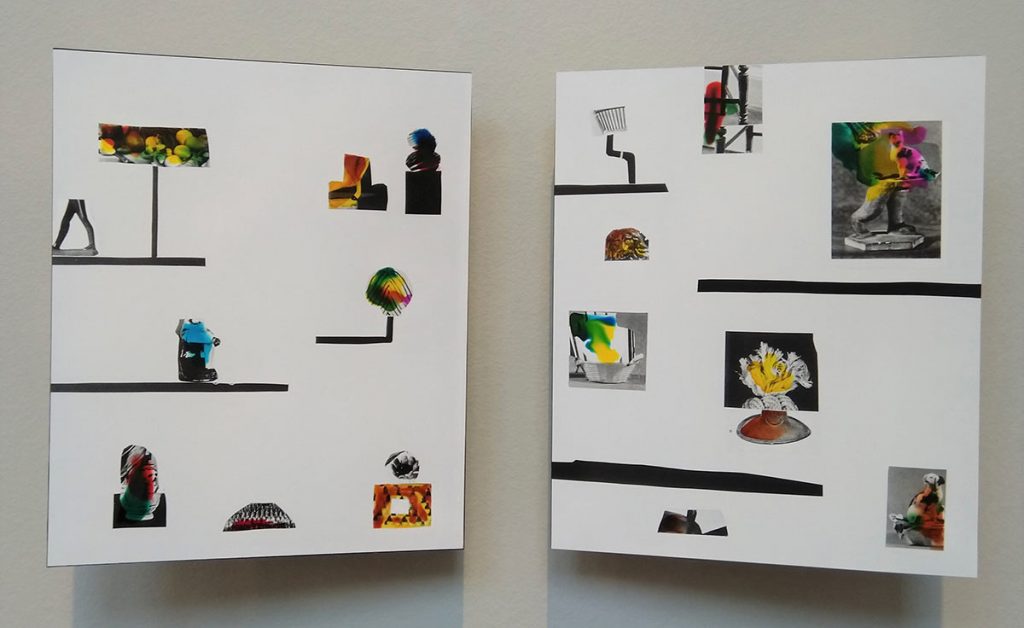
David: I had read about the collecting habits of Margaret Cavendish and was interested to learn about her relationship with Mary Delany. I had seen Delany’s delicate ‘Paper Mosaicks’ in a recent exhibition and thought this relationship to collecting and collage was pertinent to my work. At the beginning of ‘lockdown’ I purchased books about collecting/collectables; I cut images from the books, creating collages and photographed the final arrangements. I wanted my work to resemble something that was representative of a scrapbook or museum catalogue.
The curious forms in my collages rely on a certain holism, I’m not sure any individual cuttings would amount to much in isolation. It reminds me of what the poet Charles Simic said of Joseph Cornell’s practice, ‘Somewhere in the city of New York there are four or five still-unknown objects that belong together. Once together they’ll make a work of art. That’s Cornell’s premise, his metaphysics, and his religion’.
Joanna: I like that. An intuitive arrangement of things. And I think that works in general with collecting and display. Natural associations arise and I think this has really happened in the final curation of ‘Between Islands’ too. It was great to be able to have one day in the gallery together on the first day of the hang – it was an appropriate completion of the process. You displayed the artefacts and paintings with an understanding of their individual collective logic. Everything falls where it sits.
David: Lockdown had only allowed me to see photographs of some of your work so it was great to handle the artifacts during the installation. Although I had some notion of the ‘collective logic’ it was great listening to you talk, with conviction, about each object and their relationship to each other. Each ceramic was extremely tactile and encasing them only made them more enchanting. As we arranged the artifacts the world from which these objects had travelled became more visible.
Joanna: I think that is a good point to finish. Objects were made collected and arranged. Complete, for now.




